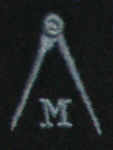Branch History
 With the purchase of Mayfly, the first airship, in 1909 came the thought from the Admiralty that weather and its forecasting might just have a role in the "modern navy". Until this point they had relied on the State Meteorological Service (today's Met Office) to provide all the data they required, that and the years of experience of trusty old salts at sea - soon to be of invaluable assistance with the Great War around the corner. One or two battleships were converted into makeshift aircraft carriers after 1915 and all needed an officer who was able to do some met forecasting as a small part of his job. Once World War One was over meteorology went into limbo for a short while until the Navy began to construct purpose built carriers and it became apparent that officers with forecasting experience would indeed be needed again. By 1934 the rumblings of another war were to be heard and the newly appointed MetO's on these carriers, who had to pull forecasting in as part of their other roles on board, realised that to provide a reliable forecast on time they needed a Met assistant. These were selected, locally on board, by the MetO from amongst the more intelligent of the seamen complement; he also trained them on the job.
With the purchase of Mayfly, the first airship, in 1909 came the thought from the Admiralty that weather and its forecasting might just have a role in the "modern navy". Until this point they had relied on the State Meteorological Service (today's Met Office) to provide all the data they required, that and the years of experience of trusty old salts at sea - soon to be of invaluable assistance with the Great War around the corner. One or two battleships were converted into makeshift aircraft carriers after 1915 and all needed an officer who was able to do some met forecasting as a small part of his job. Once World War One was over meteorology went into limbo for a short while until the Navy began to construct purpose built carriers and it became apparent that officers with forecasting experience would indeed be needed again. By 1934 the rumblings of another war were to be heard and the newly appointed MetO's on these carriers, who had to pull forecasting in as part of their other roles on board, realised that to provide a reliable forecast on time they needed a Met assistant. These were selected, locally on board, by the MetO from amongst the more intelligent of the seamen complement; he also trained them on the job.
Although not entirely successful, the navy adopted the scheme and the Seaman (Q Met) branch was formed in 1938 - receiving the princely sum of 3d per day extra whilst they were performing these Met duties. By the onset of World War Two it was recognised that these men should use their training continuously and the QMet became Seaman (Met). a separate branch, which later became Naval Airman (Met) after the War when the branch became part of the newly re-organised Fleet Air Arm. This situation carried on until 1971 when Leading Hands from other branches were able to apply to transfer into the branch and to retain their rate once qualified.
The 1960's saw the introduction of oceanography to an RN meteorologist's job specification, first as Anti Submarine Warfare Environmental Prediction System (ASWEPS) and later as oceanography. By the 1970's oceanography became part of the initial training package for both officers and ratings. This was soon followed by Met ratings becoming Metoc ratings.
2003 saw the closure of the branch, a shift from Fleet Air Arm to General Service, and the cessation of Metoc's. They were replaced by Operator Mechanics Hydrography and Meteorology (OMHM). Sadly Met is no longer part of the Fleet Air Arm but is again integrated into the hydrography branch where it started off. Initially joint training in both areas was tried but from a met point of view this was not entirely the success it was hoped and Metoc's returned in 2008.
In late 1941 and certainly by 1942 Wren Met ratings were introduced to take the place of male ratings at shore bases. To begin with most of their training was done in situ but later a few weeks training were given at Worthy Down before drafting them to air stations. It wasn't until the late 1960's and early 1970's that mixed shore base drafting came into being and then only at certain establishments. All this changed when Wrens were able to opt to go to sea and then disbanded and became part of the Royal Navy; making all members of the branch fully interchangeable.
Researched and written by Gill Charles
Tomorrow's History?
The following link was sent to TSB by Celia Saywell and, along with the text of two emails, really does show this article to be the history of tomorrow.
Email from Celia to Gill and Janet Jaehne
Global Hazards?!
A window on the ship?!
Gurus?!
All I did was watch and plot, make frothy coffee, and miss everyone's run-ashore because of night-watch!
Happy days.
L/Wren Celia Potter 116040
Email from Janet to Celia and Gill
What about plotting charts on the night shift and falling asleep, making squiggly lines on the chart!
Somehow, Able Seaman doesn't have quite the same ring to it as L/Wren or just plain Wren, but she is a cute gal! 50 years certainly makes a difference.
I certainly agree those were the days!
Wren (Able!) Janet Frost 116037.
We leave you to judge for yourself….
….even the Met Branch has come full circle and is very nearly back to where it started, with recruits from the seaman branch. As the saying goes, “What goes around, comes around.”
